Pallet Inverter Safety Tips for Saudi Arabia Plants Facing heat-resistant equipment for food & beverage
The intense heat in Saudi Arabia is a serious challenge. For food and beverage plants, this is a major concern. You must maintain the cold chain. Standard equipment can fail under these extreme temperatures. This leads to costly downtime. It can cause product spoilage. And it creates real safety hazards for your workers. Imagine your pallet inverter breaking down in the middle of a hot afternoon. Hydraulic fluid could leak. The controls might stop working. Your temperature-sensitive products, like dairy or fresh produce, are now stuck. You risk losing thousands of dollars worth of goods. Even worse, a sudden machine failure could injure an operator. This is not just a small problem. It is a major financial and safety risk that can hurt your entire operation. The solution is not just about buying any machine. It is about choosing the right machine and using it correctly. You need pallet inverters specifically designed to be heat-resistant. You also need to follow strict safety rules that are made for your hot climate. As an engineer who has built and supplied these machines for years, I want to share my knowledge to help you handle this challenge.
Ensuring pallet inverter safety in Saudi Arabia's hot food and beverage plants requires a focused approach. It starts with selecting equipment built with high-temperature-rated components, such as motors, electrical parts, and hydraulic seals. You must also use the correct high-temperature hydraulic oil. Next, you need a tough maintenance schedule that is designed for heat stress. Finally, you must give your operators detailed training. This training must cover heat-related dangers and what to do in an emergency.
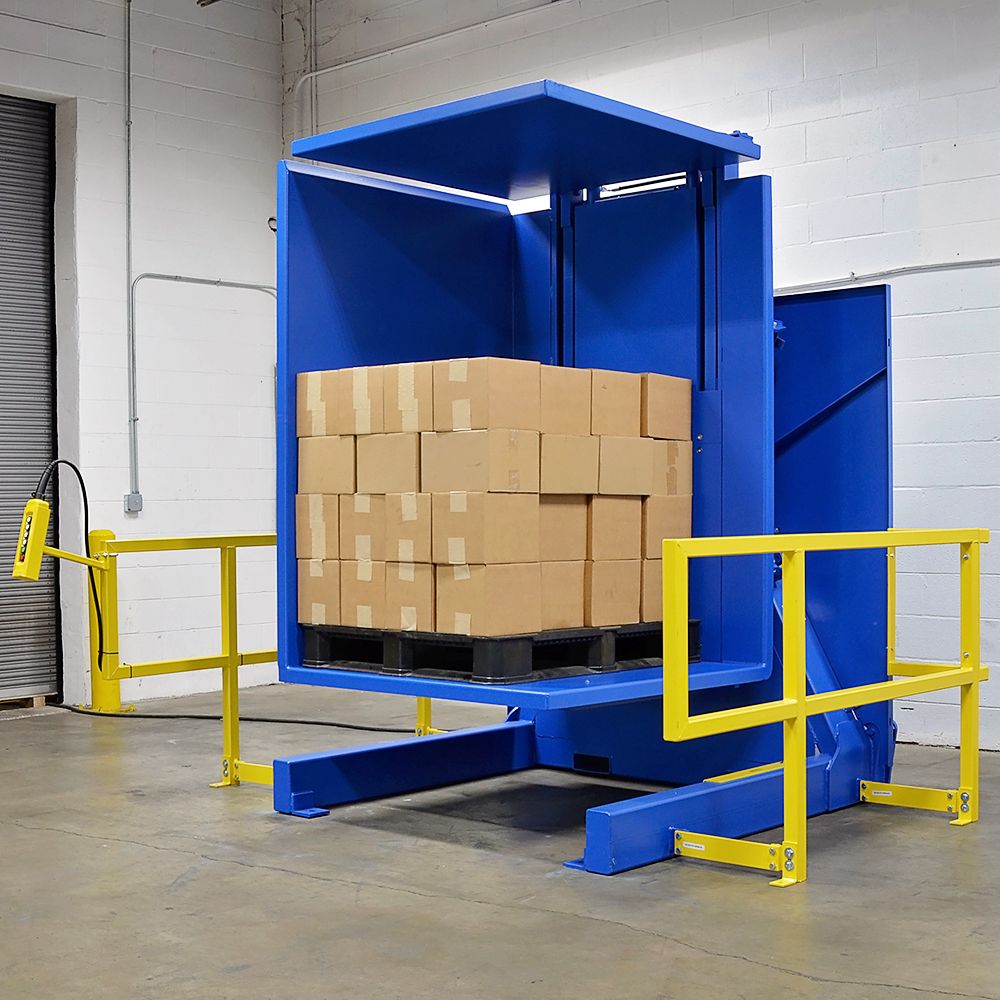
This gives you a good starting point. But to truly keep your plant safe and efficient, we need to look closer at the details. Over the years, I've helped many clients in tough environments, from the Middle East to Southeast Asia. They face similar problems with heat and humidity. I have learned that success comes from understanding the specific risks and preparing for them. Let's break down the most important questions you should be asking. This will help you protect your people, your products, and your investment.
How Does Extreme Heat Affect Pallet Inverter Components and Performance?
You just invested in a new pallet inverter. It looks strong and reliable. But have you stopped to think about what happens to it when the outside temperature hits 50°C? Many people overlook this. They assume a machine is a machine. But extreme heat is a powerful force that can wear down even the toughest equipment. Hydraulic oil, the lifeblood of the machine, starts to thin out. It loses its ability to lubricate properly. This causes parts to grind against each other, leading to premature wear and failure. The rubber seals and hoses that contain this oil become brittle and crack. This can cause dangerous leaks. And what about the electrical system? The control cabinet can overheat. This can trip circuit breakers or, even worse, permanently damage sensitive circuit boards. When these things happen, the machine's performance becomes slow and unpredictable. It might not lift properly or might stop mid-cycle. Understanding these specific points of failure is the first step to preventing them. You need to know your enemy to defeat it.
Extreme heat directly hurts a pallet inverter's performance. The biggest issue is with the hydraulic system. Heat thins the hydraulic fluid, which reduces its ability to lubricate and maintain pressure. This can make the machine's movements sluggish and weak. Heat also causes electrical components to run hotter than their designed limits. This can lead to random shutdowns and damage to control boards. It also makes rubber and plastic parts, like seals and hoses, age much faster. They can become hard and crack, causing fluid leaks and system failures.
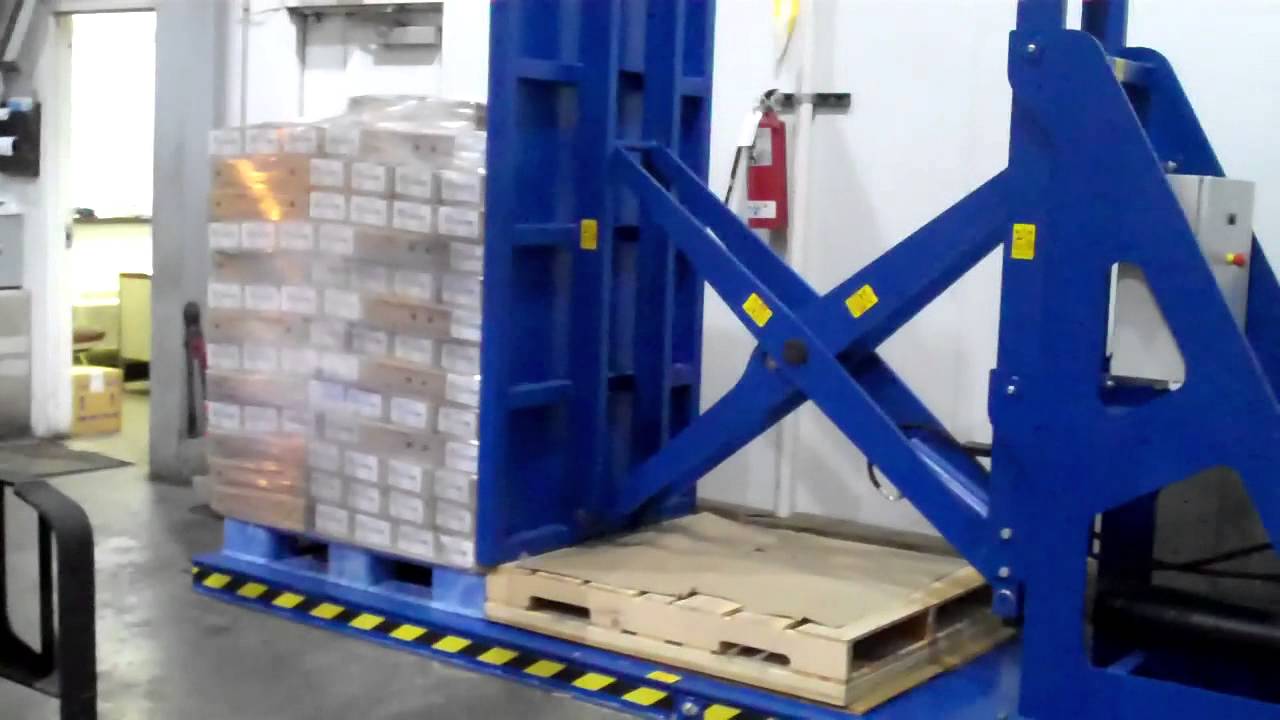
Hydraulic System Vulnerabilities
The hydraulic system is often the first thing to suffer in high heat. The viscosity of the oil is key. Viscosity is a measure of the oil's thickness and resistance to flow. When oil gets hot, its viscosity drops, meaning it becomes thinner. Thinner oil doesn't create a strong enough film between moving metal parts. This leads to increased friction, wear, and heat generation, creating a vicious cycle. To fight this, you must use a high-viscosity index (HVI) hydraulic oil. These oils are designed to maintain their thickness better across a wide range of temperatures. Another critical solution is an efficient cooling system. Many standard pallet inverters have small or no oil coolers. For a plant in Saudi Arabia, a large oil cooler, or heat exchanger, is not a luxury; it is a necessity. It works like a radiator in a car, removing excess heat from the oil to keep the system at a stable operating temperature.
| Feature | Standard Hydraulic Oil | High-Temperature Hydraulic Oil |
|---|---|---|
| Viscosity Index | Lower (e.g., 90-100) | Higher (e.g., >140) |
| Performance at 80°C | Thins significantly, loses lubricity | Maintains viscosity, protects parts |
| Oxidation Resistance | Lower, breaks down faster | Higher, lasts longer in heat |
| Recommended Use | Temperate climates (<35°C) | Hot climates (>35°C) |
Electrical and Control System Risks
Next, let's talk about the brain of the machine: the electrical control system. Electrical components are rated to work within a specific temperature range. When the air inside the control cabinet gets too hot, these components can't cool themselves effectively. This is called derating. A motor starter or a variable frequency drive (VFD) might be rated for 100 amps at 40°C, but at 50°C, it might only be able to handle 80 amps safely. Pushing it beyond that can cause it to trip or fail completely. This is why an air-conditioned control cabinet is often the best solution in places like Saudi Arabia. It creates a stable, cool environment for the electronics, no matter how hot it is outside. Also, consider the IP (Ingress Protection) rating of the cabinet. A higher IP rating, like IP65, protects against dust, which is common in the region, and water jets, which is important for cleaning in a food plant.
Mechanical and Structural Stress
Finally, heat affects the physical structure of the machine. Metal expands when it gets hot. While this is usually accounted for in the design, extreme temperature swings can put stress on welds and bolted connections. The bigger issue is with non-metallic parts. Seals, gaskets, and hydraulic hoses are very vulnerable. Standard materials like Nitrile rubber (NBR) can become hard and brittle when exposed to high heat over time. They lose their flexibility and can no longer create a proper seal. This is a common cause of leaks. For hot environments, it's essential to specify parts made from materials like Viton (FKM). Viton can handle much higher temperatures without degrading, ensuring a longer life and more reliable performance. Making these material choices from the start saves a lot of time and money on future repairs.
What Specific Safety Features Should a Heat-Resistant Pallet Inverter Have for a Food Plant?
You are ready to buy a pallet inverter. You look at the technical specifications, and the numbers for speed and capacity seem good. But is that the whole story? For a food and beverage plant in a hot climate, you have to look deeper. A standard machine might have painted steel surfaces. In a busy plant, that paint can chip off. Those chips can fall into your product, creating a serious contamination risk and potentially leading to a product recall. A standard machine might also lack the robust guarding needed to protect workers in a fast-paced setting. A simple mistake could lead to a serious injury. A machine failure in this environment is not just an equipment problem. It's a food safety problem and a worker safety problem. Let's look at the features that are not negotiable. These features are essential for heat resistance, hygiene, and overall safety.
A heat-resistant pallet inverter for a food plant in Saudi Arabia must have several specific features. First, it should be built from stainless steel, like SUS304 or SUS316, to prevent rust and make cleaning easy. Second, it needs high-temperature-rated components for the hydraulic and electrical systems to ensure it works reliably in the heat. Third, it must include advanced safety systems. This includes physical safety fences, light curtains to detect people, and clearly marked emergency stop buttons that are designed to work perfectly even in extreme temperatures. These features work together to create a machine that is safe, hygienic, and durable.
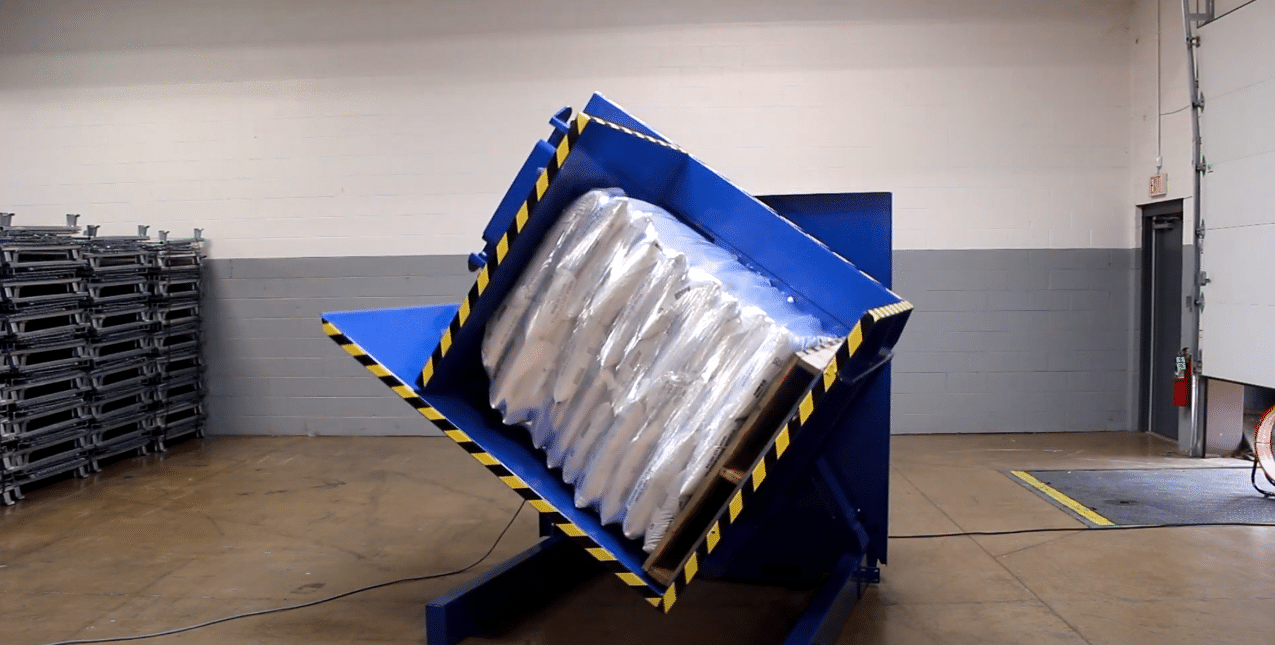
Material Selection for Hygiene and Durability
In the food and beverage industry, cleanliness is everything. This is why material choice is so important. The best choice for a pallet inverter in this setting is stainless steel. SUS304 is a great all-around option, offering excellent corrosion resistance and durability. If you are handling products with high salt or acid content, like certain juices or sauces, upgrading to SUS316 is even better, as it has enhanced resistance to chemical corrosion. The alternative, painted carbon steel, is a poor choice for a food plant. The paint can easily be chipped by pallets or forklifts. These paint chips can become foreign contaminants in your product. The exposed steel can then rust, creating another hygiene hazard. Beyond the machine's body, you should also insist on using food-grade hydraulic oil. If a leak does happen, this type of oil is non-toxic and reduces the risk of a major product contamination event. It is a simple switch that provides a huge amount of peace of mind.
Essential Guarding and Access Control
Protecting your operators is your highest priority. Modern pallet inverters should be enclosed in a secure safety area. There are two main ways to do this: physical fences and light curtains.
- Safety Fences: These are tall, sturdy wire mesh fences that create a physical barrier around the machine. They have interlocking gates. If an operator opens a gate, a sensor immediately stops the machine. This is the most foolproof way to prevent someone from walking into the machine's operating area while it's moving.
- Light Curtains: These are sets of photoelectric sensors that create an invisible curtain of light. If a person or object breaks the beam, the machine stops instantly. Light curtains are more flexible and can save space, but they must be positioned correctly to ensure safety.
For a busy plant, I often recommend a combination of both. Fencing defines the primary danger zone, while light curtains can be used at the loading and unloading points for more operational flexibility.
| Safety Feature | Cost | Footprint | Flexibility | Best For |
|---|---|---|---|---|
| Safety Fences | Moderate | Large | Low | Fully automated lines, clear separation |
| Light Curtains | Higher | Small | High | Areas with frequent operator interaction |
| Pressure Mats | Moderate | Varies | Moderate | Smaller defined zones, less common |
Control and Electrical System Specifications
As we discussed, the control system is vulnerable to heat and the environment. For a food plant that requires regular washdowns, the electrical enclosures must be properly rated. A NEMA 4X or IP65 rating is the minimum you should accept. This means the cabinet is protected against dust ingress and can withstand being sprayed with water jets from any direction. As I mentioned before, for the extreme heat in Saudi Arabia, an air-conditioned control panel is the gold standard. This keeps the electronics cool, stable, and extends their life significantly. It prevents the random trips and faults that can plague a machine in a hot factory. Inside the cabinet, the components themselves should be robust. Using high-quality, slightly oversized contactors, relays, and power supplies provides an extra margin of safety. They will run cooler and be less stressed, leading to far greater reliability over the long term.
What Are the Best Practices for Maintaining Pallet Inverters in Saudi Arabia's Climate?
The machine is finally installed and running smoothly. It's tempting to think the hard work is over and you can just let it run. That would be a big mistake. In a climate like Saudi Arabia's, a "standard" maintenance plan is a direct path to failure. The combination of intense heat and fine dust is incredibly harsh on machinery. Dust gets everywhere. It mixes with any small amount of oil or grease to create an abrasive paste that grinds away at bearings and moving parts. The heat causes seals and hoses to fail much faster than they would in a cooler climate. Air filters on coolers and control cabinets can become clogged in just a few weeks, not months. If you neglect these things, you are not just risking a small problem. You are inviting a sudden, catastrophic breakdown that will likely happen during your busiest production time. A proactive and climate-specific maintenance schedule is not an expense. It is your best insurance policy against downtime.
The best maintenance practices for pallet inverters in Saudi Arabia are all about frequency and attention to detail. You need to inspect the hydraulic fluid level and quality more often than the manual might suggest. You must clean the radiators and cooling fans on the hydraulic unit and control cabinet regularly. You should constantly check seals and hoses for any signs of cracking or hardening caused by the heat. And you must test all safety features, like emergency stops and light curtains, at least weekly to ensure they are working perfectly. This hands-on approach is key to long-term reliability.
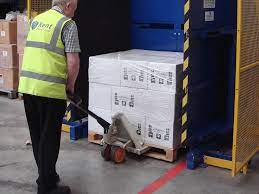
Tailoring Your Preventive Maintenance (PM) Schedule
You cannot use a generic PM schedule from a manufacturer based in a cold country. You must adapt it. The inspection intervals need to be shorter for almost every key component. What might be a monthly check in Europe should be a weekly check in Riyadh. This increased frequency allows you to catch small problems before they become big, expensive ones. A small hydraulic leak caught early is a simple fix. A burst hose that shuts down production for hours is a disaster. Your maintenance team should have a clear, written checklist that is specific to your machine and your environment.
| Maintenance Task | Standard Climate Frequency | Hot Climate (Saudi Arabia) Frequency |
|---|---|---|
| Check Hydraulic Fluid Level & Temp | Monthly | Daily |
| Inspect Hoses & Seals for Leaks/Damage | Quarterly | Weekly |
| Clean Radiators & Cooling Fans | Bi-Annually | Monthly |
| Test E-Stops & Safety Sensors | Monthly | Weekly |
| Check Electrical Cabinet Filter/AC | Quarterly | Monthly |
| Take Hydraulic Oil Sample for Analysis | Annually | Bi-Annually |
Lubrication and Fluid Management
Proper fluid management is critical. As we've established, using the correct high-temperature hydraulic oil is step one. But you also have to manage it properly. Your maintenance team should be trained to take oil samples regularly. These samples can be sent to a lab for analysis. The analysis will tell you if the oil's viscosity is still good, if it has been contaminated with water or dirt, and if it's starting to break down. This data tells you exactly when to change the oil, rather than just guessing. It prevents you from changing it too early (wasting money) or too late (damaging the machine). Just as important is keeping the cooling systems clean. The fins on a radiator or heat exchanger must be free of dust and debris to work efficiently. A quick blast with compressed air every week can make a huge difference in keeping the oil temperature down.
Spare Parts Strategy
In a hot climate where parts wear out faster, you cannot afford to wait for a spare part to be shipped from a factory in another continent. The cost of downtime is simply too high. You must have a smart spare parts strategy. Work with your machine supplier to identify the critical components that are most likely to fail due to heat and wear. Keep these parts in your on-site inventory. This is your emergency kit. A good on-site spare parts list should include:
- A full set of hydraulic hoses
- A complete seal kit for the main cylinders
- Key electrical components like contactors, relays, and power supplies
- The most important sensors, like proximity switches or photoelectric sensors
- A spare set of filters for the hydraulic system and control cabinet
Having these parts on hand can turn a multi-day shutdown into a repair that takes just a few hours. This is a critical part of ensuring your plant's productivity and meeting your goals.
How Do You Train Operators for Safe Pallet Inverter Use in Extreme Heat?
Your operators have been shown how to use the machine. They know which button starts the cycle and which one stops it. Is that really enough? Absolutely not. In an extremely hot environment like a factory in Saudi Arabia, human factors become just as important as mechanical ones. Operator fatigue and heat stress are serious safety risks. A tired or dehydrated operator is more likely to make a mistake. They might try to take a shortcut to get the job done faster. They might try to bypass a safety feature that seems inconvenient. Or they might simply fail to notice a clear warning sign, like an unusual noise or a warning light on the panel. Any of these small mistakes can lead to a major accident, injuring the operator and damaging the machine. Your training program has to go beyond the basic functions. It must include specific modules on heat safety awareness and emergency response.
Training operators for safe pallet inverter use in extreme heat means teaching them to be partners in the machine's health and their own safety. They must be trained to spot the early signs of machine overheating, like sluggish movement or strange smells. They need to understand the importance of personal safety, including staying hydrated to prevent heat stress. And they must be repeatedly drilled on emergency procedures, so they know exactly what to do in response to a hydraulic leak or an electrical fault, which are more likely in high-temperature conditions. Their training is a key layer of your safety system.
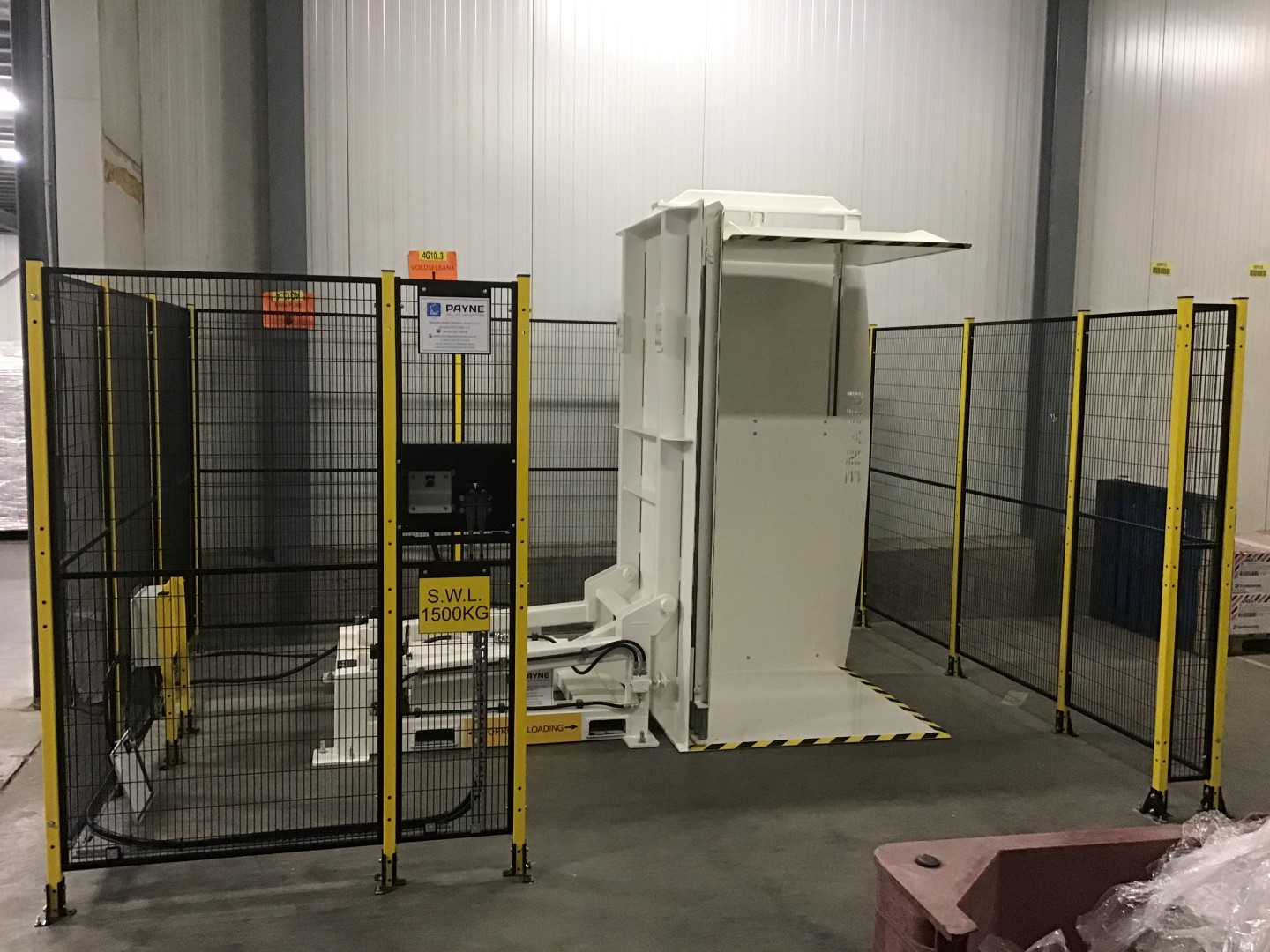
Core Operational Training
Of course, you have to start with the basics. Every operator, new or experienced, must be fully trained on the correct, standard operating procedure for your specific pallet inverter. This is the foundation of safety. This training must include:
- Proper Loading and Unloading: How to center the pallet correctly, how to ensure the load is stable, and how to operate the forklift safely around the machine.
- Understanding Capacity Limits: Every operator must know the maximum weight the machine can handle. Overloading is a primary cause of mechanical and hydraulic failure.
- Correct Use of Controls: A full walkthrough of the control panel, what each button and light means, and how to operate the machine in both automatic and manual modes, if applicable.
- Emergency Stops: Where every E-stop button is located and how and when to use them. This should be practiced, not just discussed.
Heat-Specific Hazard Awareness
This is the part of the training that is often missed. You need to train your operators to be the first line of defense against heat-related failures. They are the ones who are with the machine all day. They will notice small changes before anyone else. This training should cover:
- Recognizing Machine Overheating: Teach them what to look, listen, and smell for. Is the machine moving slower than usual? Is there a faint burning smell near the electrical cabinet? Is the hydraulic unit making a loud whining noise? These are all signs of trouble.
- Personal Safety: This is critical. You must have a company policy on hydration, work/rest cycles, and recognizing the signs of heat stress in themselves and their coworkers. A safe operator is an alert and healthy operator.
- "Do Not" Rules: Operators must be explicitly told not to override safety systems. For example, propping open the door of an air-conditioned control cabinet to "cool it down" actually defeats the entire system and can cause more damage.
| Machine Warning Sign | Potential Cause | Immediate Operator Action |
|---|---|---|
| Sluggish or Jerky Movement | Hydraulic oil is too hot and thin | Stop the machine, report to supervisor |
| Burning Smell from Control Panel | Electrical component overheating | Press E-stop, report immediately |
| Visible Hydraulic Fluid on Floor | Hose or seal has failed | Stop the machine, cordon off the area |
| Control Cabinet Fan is Loud/Off | Fan failure or filter is clogged | Report to maintenance immediately |
Emergency Response Drills
Knowing what to do in an emergency is not something you can learn from a book. It must be practiced. Your team should run regular drills for the most likely emergency scenarios.
- Hydraulic Fluid Spill: What is the procedure? Operators should know where the spill cleanup kits are located. They need to know how to contain the spill quickly to prevent slip hazards and environmental contamination.
- Electrical Fault or Fire: What is the response? Pressing the E-stop, cutting power at the main breaker (if safe to do so), and using the correct type of fire extinguisher (Class C for electrical fires).
- Lock-Out/Tag-Out (LOTO): This is the most important safety procedure before any maintenance or cleaning. Every operator and maintenance technician must be an expert in LOTO. They need to know how to de-energize the machine completely and ensure it cannot be accidentally started while someone is working on it. In a hot, stressful situation, it's easy to forget a step, which is why drilling this procedure is so important.
My Insights
I remember a client I worked with in the UAE, a large dairy company. They were expanding their facility and bought a new pallet inverter from a European supplier. It was a good machine, but it was a standard model. It wasn't designed for their environment. Within six months of installation, they were calling me with problems. Their production was stopping constantly. The main control panel kept overheating and tripping the entire machine, especially during the hot afternoon shifts. Then, they had a major hydraulic hose burst, spilling oil all over their clean production floor. It was a mess, and it cost them a lot in downtime and cleanup.
The machine simply wasn't built for the climate. We took a close look at it. The hydraulic oil cooler was too small. The seals were standard NBR rubber, which had become brittle from the heat. The electrical cabinet had no active cooling, just a small vent fan that was clogged with dust.
We worked with them to create a real solution. We replaced the faulty machine with a new pallet inverter from our factory, SHJLPACK. But this time, we specified it correctly for their needs. We built it with a large, efficient oil cooler. We used high-temperature Viton seals throughout the hydraulic system. And we equipped it with a sealed, air-conditioned control cabinet to keep the electronics safe and cool. We also helped them create a new, aggressive maintenance plan and trained their team on what to look for.
It was a tough lesson for them about the importance of buying the right equipment upfront. But it highlights a point I always make to my clients: you cannot treat a machine in Riyadh the same way you would treat one in Hamburg. The environment is one of the most important parts of the machine's specification. You are not just buying a piece of equipment; you are buying a total solution for your specific operational challenge. That is the difference between a simple supplier and a true strategic partner.
Conclusion
To ensure safety and reliability, you must choose heat-resistant equipment, implement a climate-specific maintenance plan, and provide thorough operator training. This approach protects your people, your product, and your investment.


